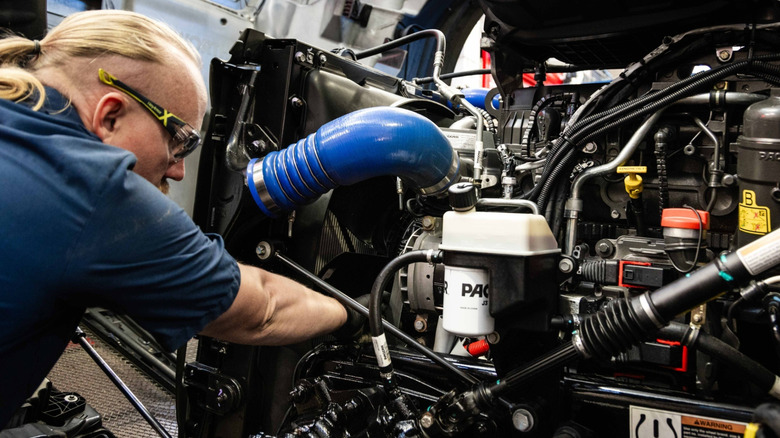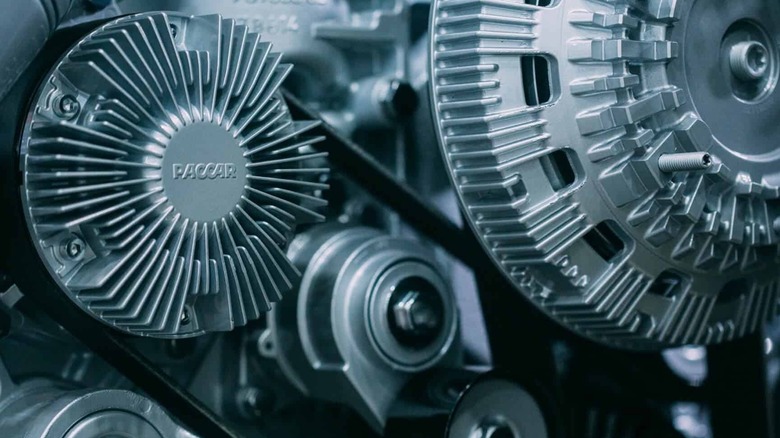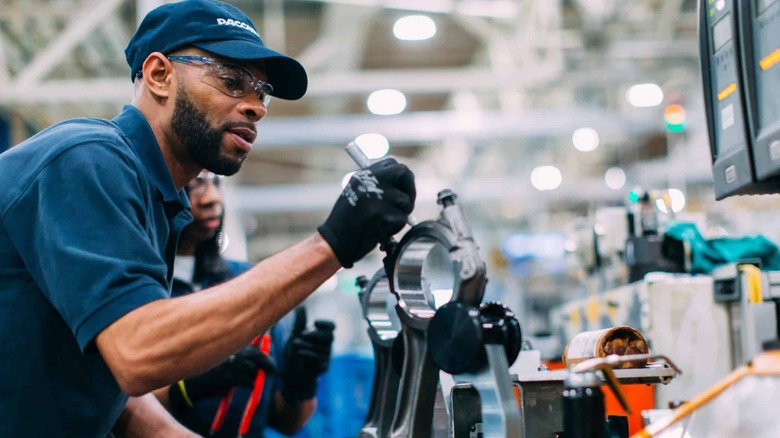
If you're in the logistics and transportation sector, or just a semi-truck enthusiast in general, then you're likely familiar with PACCAR engines. They come in three heavy-duty models: EPA MX-13, CARB MX-13, and EPA MX-11, along with two medium-duty variants: PX-9 and PX-7. PACCAR engines power the lineup of semi-trucks from Kenworth and Peterbilt, but aren't widely used in any other truck brands. They're also pretty new to the industry, having only been introduced in the United States in 2010.
Between
Cummins and PACCAR engines, the former has more loyal fans. After all, it has been around since 1919, establishing its reputation as one of the oldest engine manufacturers in the country. PACCAR engines still hold their own, though, and are generally known for their reliability, fuel efficiency, and lighter weight. Who exactly owns and makes PACCAR engines and where are they made? PACCAR engines are owned by PACCAR Inc., an American company that's publicly traded on NASDAQ and runs manufacturing factories in the United States, Brazil, and Netherlands.
Read more: Fans Say These Are The 5 Best Years For Cummins Diesel Engines
Who Owns PACCAR Engines?

As a publicly traded company, PACCAR Inc., the owner of PACCAR engines is, in turn, owned by multiple corporations and individuals. As of December 2024, two investment firms -- Vanguard Group and BlackRock -- have at least a 5% stake on the company, with Vanguard holding 11.9% and BlackRock controlling 7%. Before PACCAR was listed on NASDAQ as one of the pioneers on the stock exchange in 1971, it actually operated as a standalone entity.
A look into PACCAR's history reveals that it began as a supplier of logging and railway equipment way back in 1905. It was established by William Pigott under the original name Seattle Car Manufacturing Company, but when it formed a merger with Twohy Brothers, it was changed to Pacific Car and Foundry Company. From focusing on the railway and logging industry, Pacific Car and Foundry switched gears and acquired Kenworth Motor Truck Company, a heavy-duty truck manufacturer from Seattle, in 1945, followed by Peterbilt in 1958.
It wasn't until 1996 when PACCAR expanded into engine manufacturing with the buyout of Netherlands-based DAF Trucks. Even decades before the acquisition, DAF had been rolling out engines for its models, and this continued under PACCAR's management. Come 2005, the DAF-made PACCAR MX engine was born. It delivers a maximum torque of 1,750 lb-ft. and up to 485 hp. Initially, PACCAR MX only powered DAF's line of heavy-duty trucks, but in 2010, it was introduced to the Peterbilt and Kenworth models too.
Where Are PACCAR Engines Made?

PACCAR engines are made in the United States, Netherlands, and Brazil. In the US, the company runs a single 450,000-square-foot factory in Columbus, Mississippi. It only began operating in 2010, the same year PACCAR began using its proprietary engines for Peterbilt and Kenworth trucks. But while relatively new, the plant can already manufacture 160 engines in a day.
In fact, as of December 2020, it had successfully rolled out at least 250,000 units, specifically the models MX-11 and MX-13. PACCAR is set on expanding this 400-acre Columbus site with a 50,000-square-foot remanufacturing facility, focused on restoring used components to their original condition in an effort to minimize environmental impact.
Meanwhile, the Netherlands-based PACCAR engine facility is located in Eindhoven. This is actually under DAF Trucks, so it isn't solely dedicated to engine manufacturing. It's the home for DAF truck assembly and component productionas well. Among PACCAR's engine factories, the Eindhoven site is the oldest one in operation. It was established in 1950 when DAF was still an independent company, but today, it's one of the most technologically advanced PACCAR plants with over 30 high-tech engine testing chambers, as well as an engine remanufacturing facility. The Eindhoven factory is responsible for making models like the MX-13 and MX-11 for the European market.
Lastly, there's the Ponta Grossa, Brazil engine plant. A 330,000 square-foot facility on a 500-acre site, it's also a DAF factory for truck assembly but with a sector for PACCAR engine production. It opened in 2013 and primarily serves Brazil and South America.
Want the latest in tech and auto trends? Subscribe to our free newsletter for the latest headlines, expert guides, and how-to tips, one email at a time.
Read the original article on SlashGear.












